Will my shotgun be safe with steel shot cartridges?
I would like to try steel shot for wildfowling in my 2.5in chambered gun, but I have been told by…
Win CENS ProFlex DX5 earplugs worth £1,149 – enter here
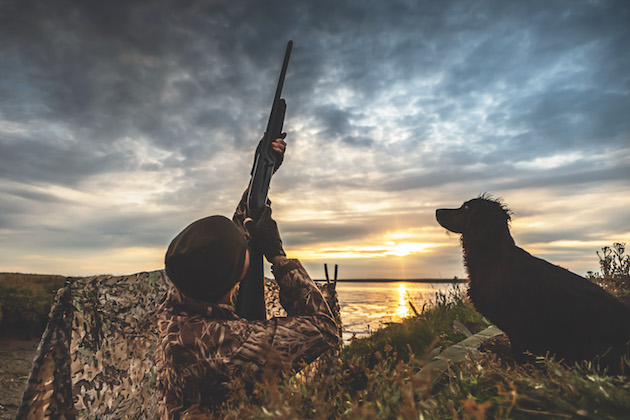 Wildfowling with Richard Negus and Mabel on the Alde 1st September 2019
Usd 18 march 20 nws
Usd 15 april 20 steel
Wildfowling with Richard Negus and Mabel on the Alde 1st September 2019
Usd 18 march 20 nws
Usd 15 april 20 steel
Twenty years ago, when restrictions on the use of lead shot on the foreshore came in, the steel shot cartridges commercially available to wildfowlers were not good enough. Steel shot performance has been playing catch-up ever since and still struggles to slough off its poor reputation. But there was a small band of committed shooters who started experimenting by loading their own. Is it possible that they might have some insights into the future of shooting live quarry with a shotgun over the next few years?
Graham Howse is secretary of Wells & District Wildfowlers Club and has been home-loading steel for 20 years. “I use it for fowling, of course, but also for game shooting and pigeon shooting without any problems, but you do have to experiment to find what works for you,” he says.
To get the best out of steel, he adds, you have to get it going as fast as you can. It’s important to remember that not all steel shot is the same. Some of the best comes from China: “It’s really good, very uniform in size and easy to load,” says Graham.
“I like to buffer my loads for geese and use Mix 47 buffer, which was specially developed for steel shot. It’s essentially a very fine grain powder. I also use ‘wad slick’ in the cartridge when loading, which is a slippery powder. I coat the steel shot with that then buffer it. It’s all about reducing friction and driving it at speed.”
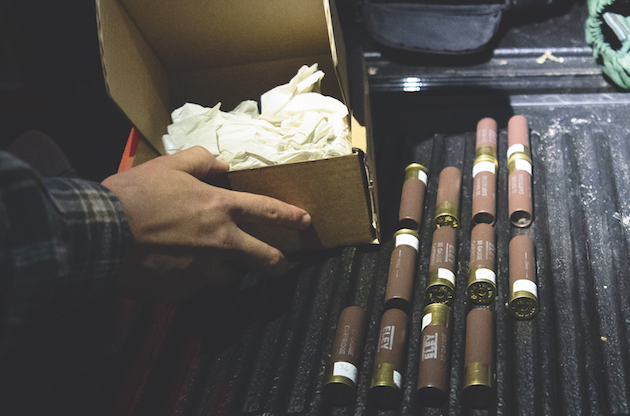
Shot size and velocity make a huge difference with steel
Some shooters may be frightened of using steel, but Graham says they needn’t be. “I don’t load duck cartridges now because I don’t need to: some of the commercially produced 3in duck cartridges are as good as anything you want to shoot. Gamebore Mammoth 36g No 3s and RC Atomic Steel 36g No 3s I will quite happily shoot at anything that is in my ability to kill cleanly.
“The wads are different as they are the full length of the shot case to protect the barrel from the steel pellets. There is a fantastic book called The Status of Steel, which has 300 or 400 loads for steel shot in the back of it. It’s the ultimate recipe book and from there you can mix and match components,” he enthuses.
“I roll-turnover all my home loads and you can get a couple of grains more powder in the cartridge and you can increase the velocity without affecting the pressure. With steel, speed kills. My own wildfowling load for geese is 40 grains and 40g. I had a very successful duck load in a 3in case with 28g of No 4s going at 1,650fps. I also use a clear fragmented disk over the top of that,” he adds. “To prevent rust, I sometimes use copper-coated steel pellets — it reduces friction as well as preventing corrosion.”
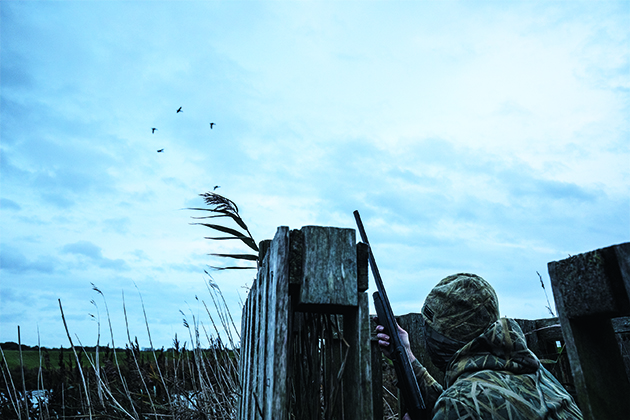
Some of the commercially produced 3in duck cartridges are superb
Graham describes loading your own cartridges as being similar to tying your own fly as “it gives you another insight into the sport. Patterning is still important and has to be done right with a minimum of 10 cartridges. If the pattern is blown, reduce your powder and don’t be frightened of aftermarket chokes.”
Ben Walmsley, a highly respected reloader who set up the Pressure Detectives group on Facebook, is another who has embraced steel shot. But he warns that manufacturers will need to up their wad game if they are to move away from single-use plastics within the five-year timeframe set by BASC and other groups.
“They can’t expect game shooters to shoot fibre wad bismuth; even though it is getting better, it will always be expensive,” he says. “You can get steel to match the performance of lead at standard ranges. While No 5s pattern well on paper from a 12-bore, a pigeon decoyer would have to bring his decoys into 25 yards. At 40 yards you’ll kill the odd bird but there are too many cripples. Having said that, when you shoot No 5s in a 20-bore they seem more lethal another 10 yards further on than in a 12-bore.”
For the best steel shot performance, Ben says, the key factors are choking and speed. “Aftermarket steel chokes can give very dense patterns. I came away from Patternmaster as they don’t like big shot. Kicks chokes shot really well, but I’m now on Italian chokes made by Gemini — half and half in a 20-bore. I shoot three-quarters in my 12-bore, but it is horses for courses,” he says.
“In a 20-bore the sweet spot for speed is 1,450fps (2.5m from muzzle). In a 12-bore it is 1,480fps to 1,520fps.”
These speeds, Ben says, are over the standard set by the International Proof Commission (CIP), and he suggests that the proof authorities should reconsider the upper limits for steel shot performance. In Ben’s experience, shooters used to lead loads can struggle to adjust to steel.
“Steel patterns completely differently from lead. I don’t know whether it’s a combination of people not getting used to the tighter patterns and the speed, or if it’s just the speed, but it does shoot differently,” he says.
“I have watched no end of people try steel in a pigeon hide and they over-lead birds. When they halve their lead, they start killing them. Part of the reason is the factory lead-shot cartridges they are used to are often not the speed at 2.5m from muzzle as advertised. When you give them a steel cartridge that really is doing 1,500fps they struggle to adjust.”
Dave Waters, a member of several wildfowling clubs in East Anglia and widely respected in the home-loading community, agrees that speed is key when it comes to steel shot performance.
“Steel can’t quite match lead ballistically as lead is more dense, so there are some provisos. We have to push steel faster than lead. At lead velocities (1,250fps) steel can’t perform, but if we push steel to the upper limit of UK CIP regulations then it can. If I could swap back to lead tomorrow, I wouldn’t. The ace card that steel has is its patterning — in that it can make lead look inferior. When you add speed and pattern together, steel can match lead.”
Home-loaders may not necessarily be ahead of the manufacturers — it’s a case of what is marketable for them. They can push the boundaries a little because many of them are using guns built for the US market. They will have their loads tested at the Birmingham Proof House and some of them fail CIP on momentum limits, which the Americans don’t use at all.
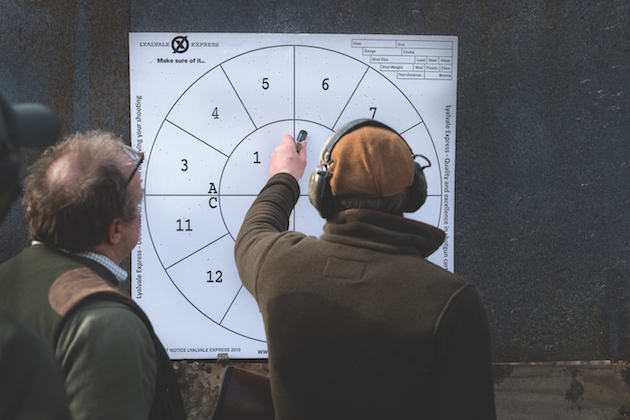
With steel, speed and patterning are crucial
American ballistician Tom Roster has credentials no one can discount. He did tests to destruction on Remington barrels to see what they could take. The conclusion was that they could take monstrous pressures with no real damage to them as long as there is no blockage.
Dave Waters says: “The duck load that I use is a 3 ½in Cheddite or Fiocchi case with a 44g load in it with No 2s — two shot sizes up from lead. People often ask why do you run a goose load for duck; why not a 36g load in a 3in case? My reasoning is simple. If you run the right length case for the chamber of your gun you don’t get any wad ‘free jump’ — you don’t leak gases around the side of the wad. And 44g of No 2s works out at about the same number of pellets as 36g of 3s so you’re not damaging the meat unnecessarily, but the pellets, being larger, have greater penetration. You are negating some of the problems steel might have.
“It’s experimenting with a mixture of choke and patterning,” Dave continues. “When you get it right it makes up for any ballistic inefficiency. I believe 3in cartridges and chambers will become much more popular.
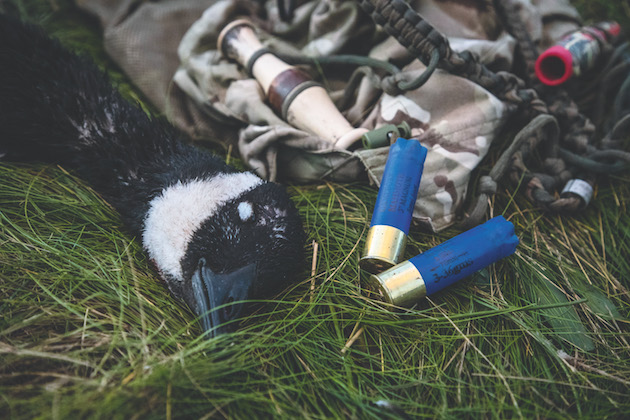
Graham Howse rates the Gamebore mammoth 36g No. 3 over relods for consistently clean kills
“A lot of us push the old boundaries and shoot tighter than half choke with steel. I generally shoot three-quarters and the Briley light full choke [Briley does not recommend this choke for steel shot]. I’ve never had a choke bulge, but I know people who have so you should understand the risk of damage to your gun.”
Dave says: “The British proof authorities need to open up the conversation about the upper limit for ‘high performance’ steel to bring us in line with the Sporting Arms and Ammunition Manufacturers’ Institute in the US.
“I have rowed back from 1,700fps loads for two reasons; muzzle blast and recoil. Also, the faster you push it, the greater the wind resistance which affects the energy of the pellet. I can use 28g at 1,700fps, but then I’d rather use 36g at 1,450fps and get more pellets in it. Pattern is crucial.
“So essentially, as a home-loader I can push the steel pellets fast enough and the pattern is better. Both those things taken together means that I can get the performance I need out of steel. Of course, I can go beyond that with tungsten but that is different subject entirely.”
I would like to try steel shot for wildfowling in my 2.5in chambered gun, but I have been told by…
It should be noted that there are limits imposed by the proof authorities on the pressure, velocity and momentum of any cartridge. While home-loaders can load whatever they like for themselves to use, without certification from the Proof House, it is illegal to sell or barter them.
Get the latest news delivered direct to your door
Discover the ultimate companion for field sports enthusiasts with Shooting Times & Country Magazine, the UK’s leading weekly publication that has been at the forefront of shooting culture since 1882. Subscribers gain access to expert tips, comprehensive gear reviews, seasonal advice and a vibrant community of like-minded shooters.
Save on shop price when you subscribe with weekly issues featuring in-depth articles on gundog training, exclusive member offers and access to the digital back issue library. A Shooting Times & Country subscription is more than a magazine, don’t just read about the countryside; immerse yourself in its most authoritative and engaging publication.

